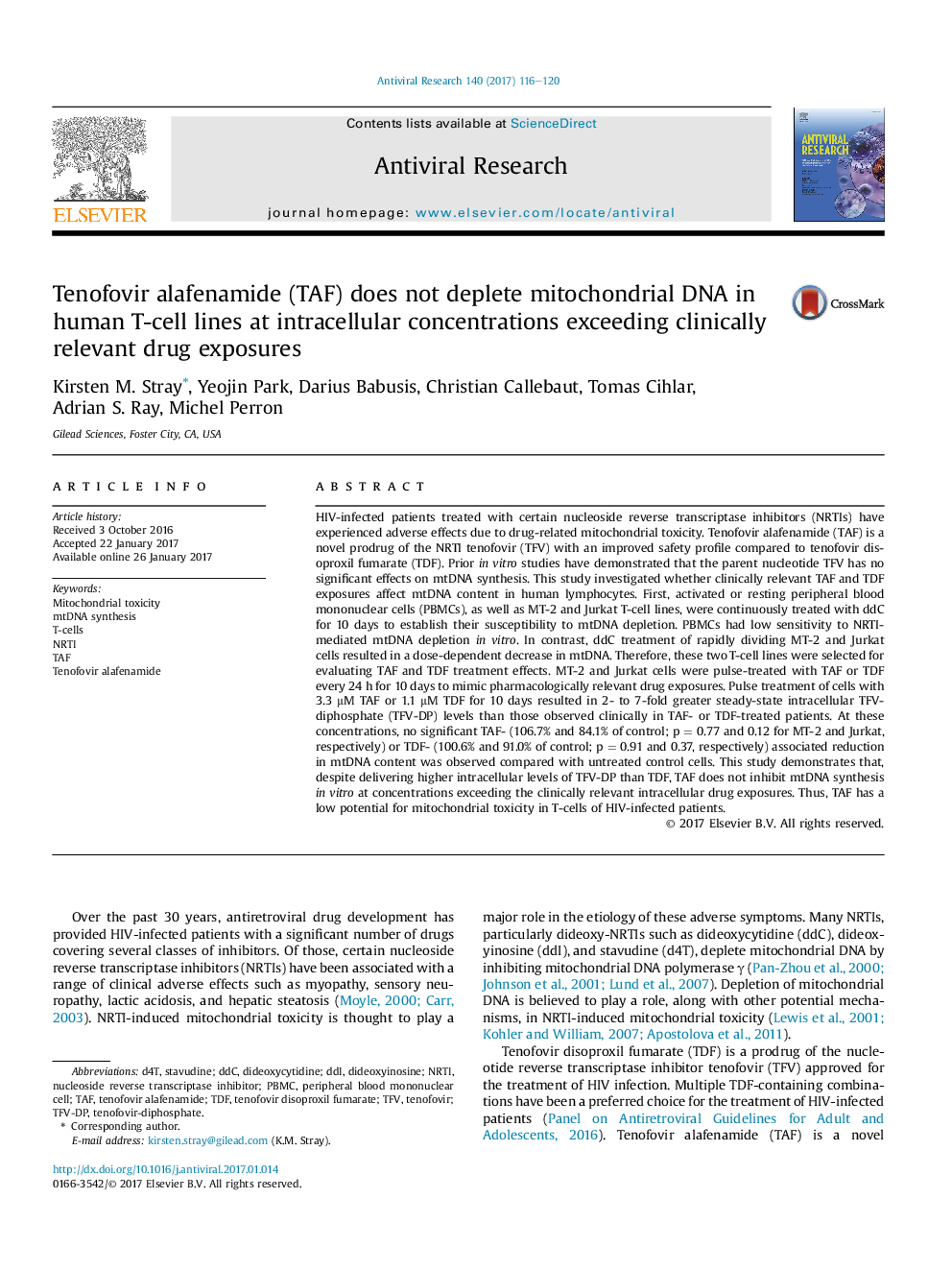| کد مقاله | کد نشریه | سال انتشار | مقاله انگلیسی | نسخه تمام متن |
|---|---|---|---|---|
| 5551830 | 1557803 | 2017 | 5 صفحه PDF | دانلود رایگان |

- Adverse effects due to mitochondrial toxicity are associated with certain NRTIs.
- TAF is a novel prodrug of the NRTI TFV with improved clinical efficacy and safety profiles compared to TDF.
- T-cell lines showed a dose-dependent decrease in mtDNA upon exposure to ddC.
- TAF did not inhibit mtDNA synthesis in T-cell lines at concentrations exceeding clinically relevant intracellular exposure.
- Treatment with TAF-containing regimens has a low potential for mitochondrial toxicity in T cells.
HIV-infected patients treated with certain nucleoside reverse transcriptase inhibitors (NRTIs) have experienced adverse effects due to drug-related mitochondrial toxicity. Tenofovir alafenamide (TAF) is a novel prodrug of the NRTI tenofovir (TFV) with an improved safety profile compared to tenofovir disoproxil fumarate (TDF). Prior in vitro studies have demonstrated that the parent nucleotide TFV has no significant effects on mtDNA synthesis. This study investigated whether clinically relevant TAF and TDF exposures affect mtDNA content in human lymphocytes. First, activated or resting peripheral blood mononuclear cells (PBMCs), as well as MT-2 and Jurkat T-cell lines, were continuously treated with ddC for 10 days to establish their susceptibility to mtDNA depletion. PBMCs had low sensitivity to NRTI-mediated mtDNA depletion in vitro. In contrast, ddC treatment of rapidly dividing MT-2 and Jurkat cells resulted in a dose-dependent decrease in mtDNA. Therefore, these two T-cell lines were selected for evaluating TAF and TDF treatment effects. MT-2 and Jurkat cells were pulse-treated with TAF or TDF every 24 h for 10 days to mimic pharmacologically relevant drug exposures. Pulse treatment of cells with 3.3 μM TAF or 1.1 μM TDF for 10 days resulted in 2- to 7-fold greater steady-state intracellular TFV-diphosphate (TFV-DP) levels than those observed clinically in TAF- or TDF-treated patients. At these concentrations, no significant TAF- (106.7% and 84.1% of control; p = 0.77 and 0.12 for MT-2 and Jurkat, respectively) or TDF- (100.6% and 91.0% of control; p = 0.91 and 0.37, respectively) associated reduction in mtDNA content was observed compared with untreated control cells. This study demonstrates that, despite delivering higher intracellular levels of TFV-DP than TDF, TAF does not inhibit mtDNA synthesis in vitro at concentrations exceeding the clinically relevant intracellular drug exposures. Thus, TAF has a low potential for mitochondrial toxicity in T-cells of HIV-infected patients.
Journal: Antiviral Research - Volume 140, April 2017, Pages 116-120